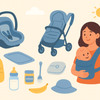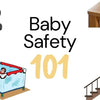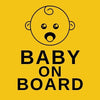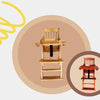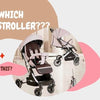Safety First: Why Investing in a Baby Car Seat is Essential
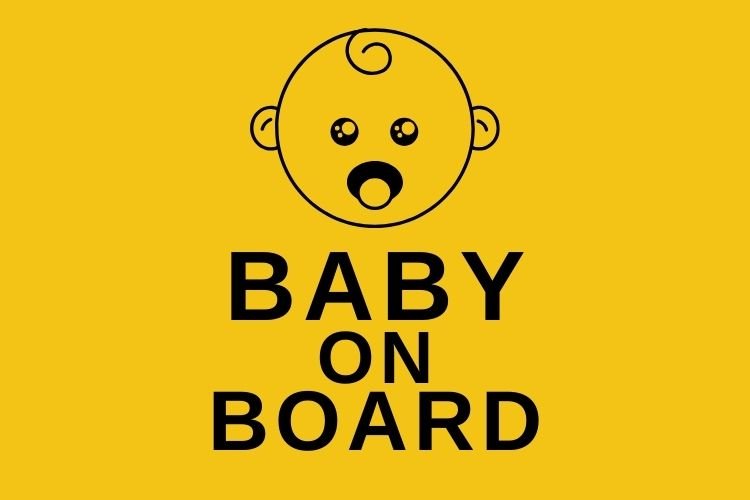
The importance of baby car seats
As a responsible parent, you strive to provide the best protection for your little one. When it comes to car safety, investing in a reliable baby car seat is absolutely essential. Not only is it the law in many places, but it also plays a vital role in keeping your child safe in case of an accident.
A high-quality baby car seat provides a cocoon of protection, effectively restraining your child and minimizing the risk of injury during sudden stops or collisions. It is specially designed to absorb impact and distribute the force across the strongest parts of the body, such as the back and shoulders, reducing the chances of severe injury.
Additionally, using a baby car seat ensures that your child is securely fastened in place, minimizing distractions for the driver and decreasing the likelihood of accidents caused by the child moving around inside the vehicle.
Remember, accidents can happen at any time, even during short trips, so it’s important to make sure your child is properly secured. Investing in a reliable baby car seat is a straightforward and effective way to provide the best safety measures for your little one. Don't compromise on their safety—make it a priority.
Car seat safety regulations and standards
When it comes to the safety of your child, there are few things more important than investing in a high-quality baby car seat. Car accidents can happen in the blink of an eye, and the consequences can be devastating. A baby car seat provides a layer of protection that can make all the difference in ensuring your child's safety.
A baby car seat is designed to keep your child securely in place during a car journey. It prevents them from being thrown around inside the vehicle in the event of sudden stops or collisions. The seat's harness system ensures that your child is properly restrained and reduces the risk of injury.
In addition to physical protection, baby car seats also provide peace of mind for parents. Knowing that your child is securely fastened in a car seat allows you to focus on the road and decreases the likelihood of accidents caused by distractions. Investing in a baby car seat is a small price to pay for the safety and well-being of your child.
Types of baby car seats
In order to ensure the highest level of safety for children, car seat safety regulations and standards have been put in place. These regulations vary from country to country, but they all aim to ensure that baby car seats meet certain safety requirements.
One of the most important regulations is the proper use of car seats based on the child's age and size. Different types of car seats are recommended for different stages of a child's development. For example, rear-facing car seats are recommended for infants, while forward-facing car seats are suitable for older children.
In addition to age and size requirements, car seats must also meet specific safety standards. These standards include crash testing, flame resistance, and the use of safe materials. It's important to choose a baby car seat that complies with these regulations to ensure the highest level of safety for your child.
Choosing the right car seat for your child's age and size
When it comes to baby car seats, there are several different types to choose from. Each type is designed to meet the specific needs of children at different stages of their development. Understanding the different types of baby car seats will help you make an informed decision when choosing the right one for your child.
1. Rear-Facing Infant Car Seats: These car seats are designed for infants and are installed in a rear-facing position. They provide maximum protection for newborns and young infants.
2. Convertible Car Seats: Convertible car seats can be used in both rear-facing and forward-facing positions, making them suitable for infants and older children. They offer flexibility as your child grows.
3. Forward-Facing Car Seats: These car seats are designed for older children who have outgrown rear-facing seats. They provide protection for the child's upper body and are installed in a forward-facing position.
4. Booster Seats: Booster seats are suitable for older children who have outgrown forward-facing car seats. They elevate the child so that the seat belt fits properly across their body.
Choosing the right type of car seat for your child is crucial to ensure their safety. Consider their age, weight, and height when making your decision.
Installing and using a baby car seat correctly
Selecting the right car seat for your child's age and size is essential to ensure their safety. Different car seats are designed to accommodate children at different stages of development. Here's a breakdown of the recommended car seats based on age and size:
1. Infants (up to 2 years old): Rear-facing infant car seats provide the best protection for infants. They should be used until the child reaches the maximum weight or height limit specified by the manufacturer.
2. Toddlers (2 to 4 years old): Convertible car seats can be used in a rear-facing position for toddlers. Once they outgrow the rear-facing position, the seat can be converted to a forward-facing position.
3. Preschoolers (3 to 6 years old): Forward-facing car seats are suitable for preschoolers. They should be used until the child reaches the maximum weight or height limit specified by the manufacturer.
4. School-age children (6 to 12 years old): Booster seats are appropriate for school-age children who have outgrown forward-facing car seats but are not yet tall enough for the seat belt to fit properly without a booster.
Remember, the guidelines provided here are general recommendations. Always refer to the specific manufacturer's guidelines for the car seat you choose.
Common mistakes to avoid when using a baby car seat
Installing and using a baby car seat correctly is crucial to ensure its effectiveness in protecting your child. Here are some important steps to follow:
1. Read the Instruction Manual: Each car seat may have specific installation requirements, talk to our expert team who will guide you through this process and install it for you free of charge at the point of purchase.
2. Choose the Right Location: The safest place for a car seat is in the back seat, away from airbags. Car Seats are designed to be used on either side of the rear seat. They should not be fitted in the centre.
3. Secure the Car Seat: Follow the manufacturer's instructions to secure the car seat tightly. It is normal for the seat to have a little movement after it is fitted - this is usually to minimise the impact and forces travelling through the seat in the event of a crash.
4. Harness Your Child Correctly: Make sure the harness is snug and secure.
5. Double-Check the Installation: Once the car seat is installed and your child is securely harnessed, give it a final check to ensure everything is in place correctly.
Remember, if you're unsure about the installation or use of your car seat, consult our staff at Nesh Kids Store - we are always happy to help.

